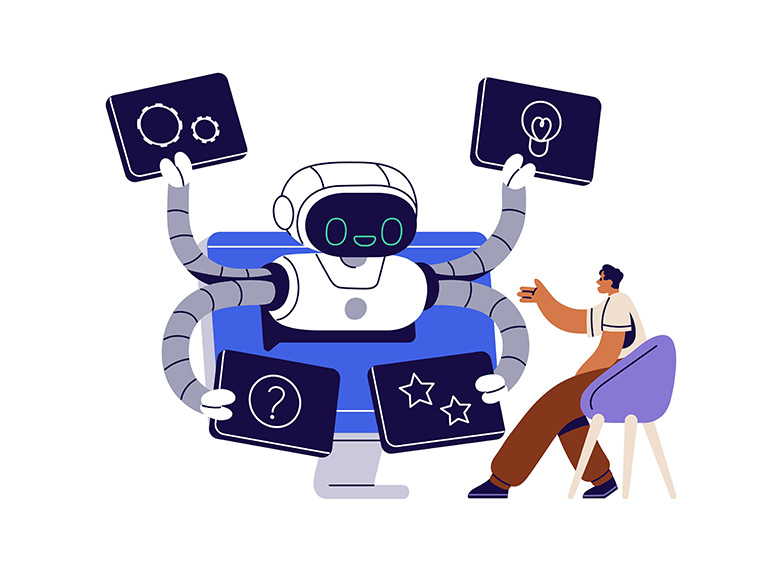
It started with a mouse in 1950 – a mechanical mouse that learned how to navigate a maze from experience. It was developed at AT&T’s Bell Labs, and it’s often considered the world’s first example of machine learning.
The mouse has grown into the field of Artificial Intelligence – a game-changing technology we use across our business. AI helps build and optimize the 5G network. It helps to fight fraud and enhance cybersecurity. We even use AI to guide our truck dispatch, helping technicians reach customers on time.
Artificial Intelligence is defined as a non-human system that mimics human intelligence. But another term is equally important: Ethics. It’s a system of moral standards and human values. It still belongs to people, and people still have responsibility for the outcomes generated by AI.
Here are the guiding principles that AT&T has adopted for working with Artificial Intelligence:
1. By People, For People
We incorporate human oversight into AI. With people at the core, AI can enhance the workforce, expand capability and benefit society as a whole.
2. Accessible and Shared
We support open-source communities whenever appropriate to further access, collaboration, standardization and participation in industry discussion.
3. Secure and Ethical
We are grounded in ethics, safety, and values at every stage of AI, including our privacy principles and security safeguards.
- Design: We use varied, validated datasets and diverse human input to achieve objectives.
- Development: We use a transparent approach to algorithms that includes safeguards.
- Deployment: We monitor outcomes to ensure accuracy and help minimize biases.
These may seem simple and common sense. But as AI leaders, we believe their importance can’t be overstated. These principles will guide our decisions from design to deployment.
Here’s a hypothetical example. AI can make our network more efficient. It reduces power needs and physical duplication by offering fast and smart routing decisions. But what if a new algorithm to skirt outages kept favoring urban customers at the expense of rural ones? Not on purpose – but as an unintended consequence.
No organization will be perfect, but that’s what humans must try to anticipate, catch and repair. The people who run AI decide on the data used, the goals set, the algorithms deployed, and the outcomes monitored.
What’s Next?
AI continues to evolve at a rapid pace. In addition to our principles, we’re developing an internal set of operating guidelines, compliance tools and governance. We’re refining and expanding our AI training programs.
We’re committed to doing it right. When outcomes are owned by people, no one should be able to claim, “The machine did it.”
Tom Moore is AT&T’s chief privacy officer and senior vice president-compliance.
For more information, read about our new generative AI tool.


